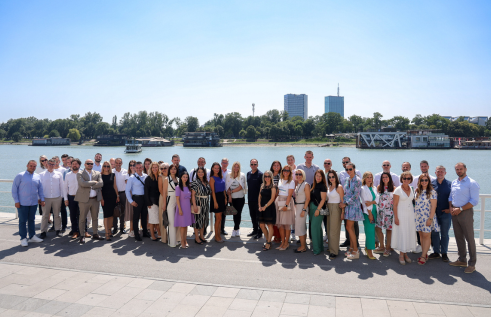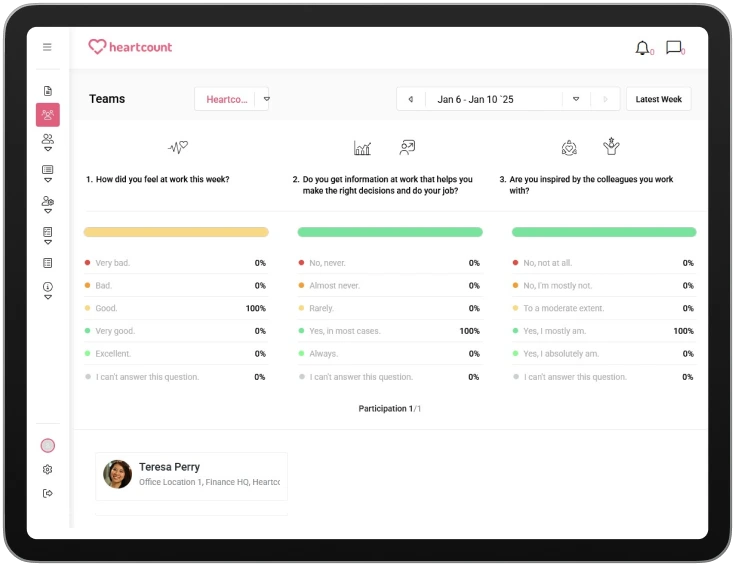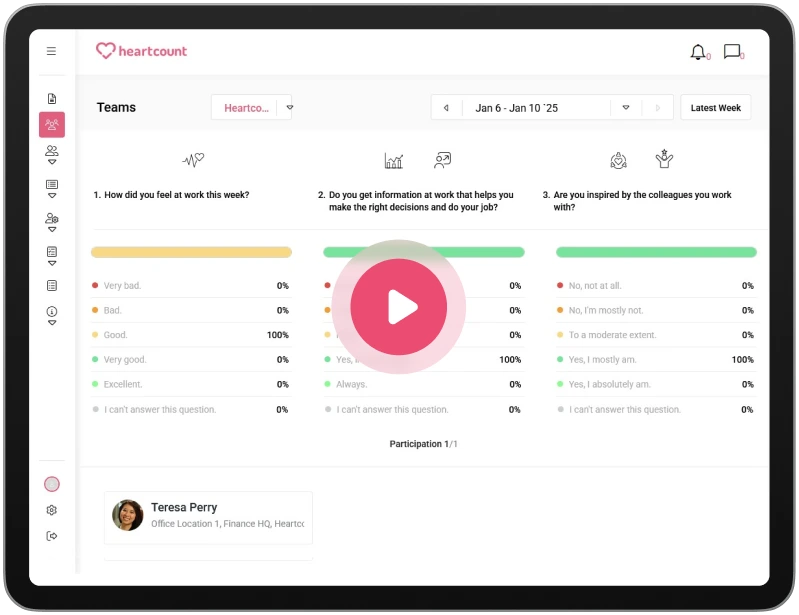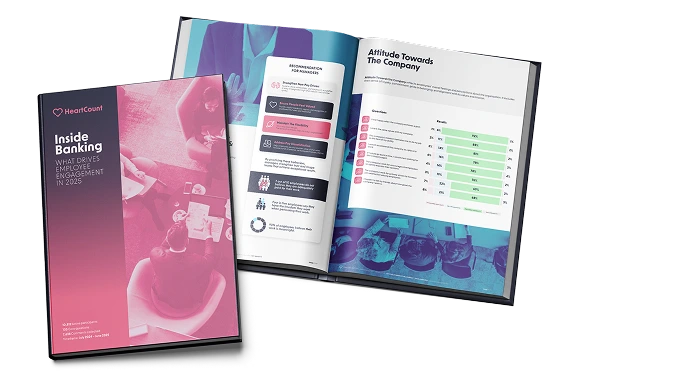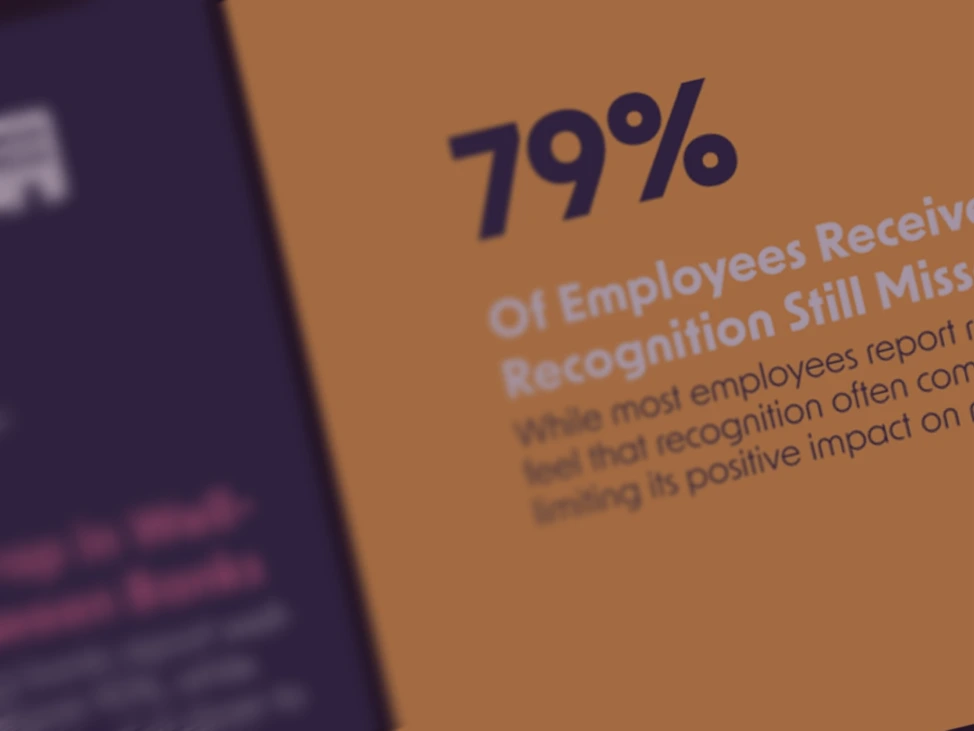What is Work Climate and How to Measure it?

“Employees who feel appreciated will always do more than expected.”
Think about the best job you’ve ever had—what made it so memorable? Chances are, it wasn’t just the paycheck or the perks but the work environment itself. A positive work climate can make all the difference, shaping not just your performance but your overall employee satisfaction and well-being.
Now flip the script. Have you ever dreaded going to work? Perhaps the atmosphere was tense, or communication felt strained. A poor workplace climate can drain motivation, diminish productivity, and even drive people to leave.
The truth is, the climate of your workplace impacts everyone—employees, teams, and the organization as a whole. It’s the invisible force that either energizes or demoralizes. So, what’s really at play here? Is it the leadership, the relationships, or perhaps the systems in place?
Let’s uncover the factors that define work climate and why it’s essential for your workplace success.
-
1.What is the work climate?
-
2.Types of work climate
-
3.Blended climates
-
4.Work climate vs. work culture
-
5.How they interact
-
6.Why the distinction matters
-
7.Benefits of a positive work climate
-
8.Holistic impact
-
9.How to measure work climate
-
10.Strategies to improve work climate
-
11.A proactive approach to change
-
12.Conclusion
“Employees who feel appreciated will always do more than expected.”
Think about the best job you’ve ever had—what made it so memorable? Chances are, it wasn’t just the paycheck or the perks but the work environment itself. A positive work climate can make all the difference, shaping not just your performance but your overall employee satisfaction and well-being.
Now flip the script. Have you ever dreaded going to work? Perhaps the atmosphere was tense, or communication felt strained. A poor workplace climate can drain motivation, diminish productivity, and even drive people to leave.
The truth is, the climate of your workplace impacts everyone—employees, teams, and the organization as a whole. It’s the invisible force that either energizes or demoralizes. So, what’s really at play here? Is it the leadership, the relationships, or perhaps the systems in place?
Let’s uncover the factors that define work climate and why it’s essential for your workplace success.
What is the work climate?
Work climate refers to the atmosphere that surrounds you at work. It’s the cumulative perception of how employees feel about their workplace, shaped by day-to-day interactions, leadership behavior, and organizational systems.
Imagine stepping into your office each morning—does it fill you with energy, or does it feel like a grind? That’s the essence of the work climate.
Unlike work culture, which reflects the deeper, shared values of an organization, work climate is more fluid. It’s the “here and now” of how things feel.
For instance, a company with a strong culture of collaboration might experience a strained climate during a period of leadership changes. The climate adjusts with the dynamics of people, communication, and workload.
A positive organizational climate does more than boost employee satisfaction—it boosts productivity, encourages collaboration, and strengthens loyalty.
The impact of a supportive work environment is clear: in 2023, approximately 65% of employees reported experiencing burnout, with 72% stating it negatively affected their job performance. By prioritizing a healthy and engaging workplace culture, you can create a resilient, thriving team that performs at its best.
Types of work climate
Work climates can be as diverse as the teams within an organization. Each type influences how employees feel, interact, and perform.
Let’s explore the most common work climates, complete with practical examples to illustrate their impact.
1. Supportive climate
A supportive work climate prioritizes collaboration, trust, and encouragement. Employees feel their voices are heard, and they have the resources they need to succeed. This type of climate often promotes creativity and camaraderie.
- Characteristics: Open communication, regular feedback, and an emphasis on employee well-being.
- Output: Team members openly share ideas during brainstorming sessions, knowing their contributions are valued.
Why it works: Employees in supportive climates are more likely to feel engaged and loyal, leading to higher productivity and lower turnover.
2. Directive climate
A directive climate is all about structure and discipline. It’s especially effective in industries where compliance, precision, and clear roles are critical. However, it can sometimes feel rigid if not balanced with opportunities for autonomy.
- Characteristics: Strong hierarchy, clear rules, and a focus on authority.
- Output: Employees know exactly what’s expected of them, and decisions are made swiftly by leadership.
Why it works: This climate thrives in environments that require accuracy and consistency. Still, adjustments may be needed over time to prevent employees from feeling micromanaged.
3. Innovative climate
Innovation flourishes in environments that encourage experimentation and risk-taking. Employees feel empowered to challenge the status quo and think creatively without fear of failure.
- Characteristics: Flexibility, encouragement of new ideas, and a tolerance for failure.
- Output: An organization that regularly holds “innovation days” ensures that employees can pitch out-of-the-box ideas, with the best ones earning team resources for development.
Why it works: Employees are motivated to bring their best ideas forward, driving innovation and keeping the organization competitive in a fast-changing market.
4. Hostile climate
A hostile work climate is marked by stress, fear, and lack of support. This environment often stems from poor leadership, unclear expectations, or favoritism. It’s the type of climate most organizations aim to avoid.
- Characteristics: High tension, lack of trust, and frequent conflicts.
- Output: An organization where managers criticize employees harshly in front of others, creating a culture of fear and resentment.
Why it’s harmful: A hostile climate leads to toxic workplaces, high turnover, low morale, and significant drops in productivity. Over time, it can harm the organization’s reputation.
5. Achievement-oriented climate
An achievement-oriented climate is all about setting ambitious goals and celebrating milestones. Employees are motivated by clear objectives and tangible rewards for their efforts.
- Characteristics: Goal-setting, performance incentives, and regular recognition.
- Example: A team where employees are given stretch goals and exceptional performance is rewarded with bonuses, promotions, or public acknowledgment.
Why it works: Employees in this environment feel driven to perform at their best, and they’re more likely to remain motivated when achievements are recognized.
COLLECT
Blended climates
It’s worth noting that workplaces rarely fit neatly into a single type of climate. A company might have a supportive climate overall but adopt a directive approach in certain departments, like compliance or legal. The key is finding the right balance to meet organizational and employee needs.
Now that we’ve covered these climate types, how do they connect to work culture? Let’s clarify the distinction to ensure you’re focusing on the right changes in your organization.
Work climate vs. work culture
You might be wondering: isn’t work climate just another term for work culture? While they’re closely related, they’re not the same. Understanding their differences can help you address workplace challenges more effectively.
Work climate: the day-to-day atmosphere
Work climate refers to the short-term, tangible perception of the workplace environment. It’s how employees feel about their immediate surroundings, interactions, and leadership on any given day. Think of it as the “vibe” of the office.
- Dynamic: Work climate can shift quickly based on factors like leadership changes, workload, or even team dynamics.
- Employee-driven: It reflects how employees experience and responds to the organization in real-time.
Example: In a company undergoing a reorganization, employees may feel uncertain and tense, even if the organization has a long-standing culture of collaboration and trust.
Work culture: The long-term foundation
Work culture, on the other hand, is the deeper set of shared values, beliefs, and norms that shape how things are done over time. It’s the backbone of an organization’s identity and influences decisions, behaviors, and priorities.
- Stable: Work culture evolves gradually and is less susceptible to short-term changes.
- Leadership-driven: It’s shaped by the organization’s leaders and their commitment to core values.
Example: A company with a culture of transparency might encourage open dialogue and honesty, even during challenging periods.
How they interact
Work climate and work culture are interconnected. Culture provides the foundation for climate, while climate reflects how culture is experienced in the moment.
- A strong, positive culture can create a resilient work climate, even during turbulent times.
- A negative work climate, however, can signal inconsistencies in the organization’s culture or values.
Example: Consider a technology company that has a culture centered around innovation and creativity. On a typical day, the work climate may feel energetic, with employees sharing ideas freely and collaborating on projects. However, during a period of intense deadlines or leadership changes, the work climate might shift.
Employees may feel stressed and less collaborative despite the company’s underlying culture of innovation. In this case, the work culture remains the same, but the work climate temporarily changes based on external pressures.
UNDERSTAND
Why the distinction matters
Addressing work climate often leads to quicker, more visible improvements, while changes to culture require a long-term, strategic approach. By focusing on both, you can:
- Identify immediate issues: Tackle problems like poor communication or high stress to improve daily experiences.
- Strengthen the core: Align climate with culture to ensure employees feel supported and valued consistently.
Example: A company with a culture of innovation might introduce employee experience tools to ensure the climate supports experimentation and creative problem-solving.
With this distinction in mind, let’s explore the tangible benefits of cultivating a positive work climate. Spoiler alert: it’s a win-win for both employees and organizations!
Benefits of a positive work climate
A positive work climate doesn’t just make employees happier—it creates a ripple effect of advantages that elevate the entire organization. From increasing productivity to improving retention, here’s why creating a supportive environment should be a top priority.
For employees
- Higher job satisfaction:
When employees feel valued and supported, they’re more likely to enjoy their work. A positive climate nurtures this sense of fulfillment, leading to better engagement and performance.
Employees in organizations with positive climates contribute to a thriving work culture. In fact, job satisfaction in the United States reached 62.3% in 2022, the highest level recorded since 1987, highlighting the growing impact of supportive workplace environments.
- Improved well-being:
Stress is a leading cause of absenteeism and burnout, but a healthy work climate reduces these risks. Employees who feel their workplace promotes balance and care are less likely to face mental health challenges.
Flexible working hours and wellness programs in a supportive climate can significantly reduce absenteeism. For instance, wellness programs have been shown to decrease sick days by 56%, demonstrating a substantial impact on attendance.
- Strengthened collaboration:
In climates that emphasize trust and teamwork, employees are more willing to share ideas and collaborate effectively. This encourages innovation and helps teams achieve their goals.
For example, business leaders have observed a 30% increase in productivity within collaborative workplaces. By cultivating a collaborative work environment, organizations can boost efficiency and drive success.
- Greater loyalty:
Employees in positive climates feel a stronger connection to their workplace, which reduces turnover. For instance, Deloitte reported that organizations with a strong learning culture have 30%–50% higher engagement and retention rates.
For organizations
- Increased productivity Employees who feel motivated and supported bring their best selves to work. They’re not just completing tasks—they’re excelling at them.
A study found that happy employees are 13% more productive, directly boosting organizational performance. - Stronger employer branding: A positive work climate builds your reputation, making it easier to attract top talent. Word spreads quickly when a company prioritizes its people.
For example, Glassdoor ratings of companies with strong climates show an average score of 4.3 out of 5, making them highly attractive to job seekers. - Lower turnover costs High employee turnover can drain resources. By creating a positive climate, organizations reduce churn and the associated costs of hiring and training.
- Better innovation Organizations with climates that encourage experimentation and creative thinking are more likely to stay ahead of the curve in competitive markets.
ACT
Holistic impact
A positive work climate is the glue that holds high-performing teams together. It aligns employee goals with organizational objectives, ensuring both thrive. As the saying goes, “Take care of your employees, and they’ll take care of your business.”
How to measure work climate
Measuring work climate is essential for understanding how employees perceive their environment and identifying areas for improvement. Here’s how you can do it effectively:
1. Employee surveys
- What it is: Anonymous surveys that assess employee morale, satisfaction, and sentiment.
- Why it works: They provide direct feedback on how employees feel about their workplace.
- How to implement: Conduct an employee happiness survey to gather insights on employee well-being, communication, and leadership.
2. Real-time feedback tools
- What it is: Continuous feedback tools that allow employees to share their thoughts in real-time.
- Why it works: It identifies issues as they arise, enabling quick intervention.
- How to implement: Automated pulse check surveys can be one level of weekly feedback, while open feedback and employee recognition sections can help you with insights on wider level. If needed you can even implement custom surveys with dedicated topics for more in depth understanding on specific matters.
3. Focus groups and one-on-one interviews
- What it is: In-depth discussions with employees to explore workplace dynamics.
- Why it works: They provide context behind survey data, uncovering root causes of issues.
- Pro tip: Ensure confidentiality so employees feel safe sharing honest feedback.
4. Performance metrics analysis
- What it is: Use KPIs like turnover rates, absenteeism, and productivity to assess work climate indirectly.
- Why it works: Trends in these metrics often correlate with shifts in employee morale.
5. Observation
- What it is: Leadership and HR professionals can observe team interactions to gauge the work climate.
- Why it works: Nonverbal cues and behavior often reveal underlying sentiments.
Strategies to improve work climate
Creating a positive work climate doesn’t happen by accident. It requires deliberate effort and consistent strategies. Whether you’re starting from scratch or looking to fine-tune your workplace, these actionable steps can help you create an environment where employees thrive.
1. Promote transparency
Open and honest communication is the foundation of trust. Employees are more likely to feel valued and engaged when they understand the organization’s goals and challenges.
- What you can do: Share company updates regularly through town halls, newsletters, or team meetings. Encourage leaders to openly discuss changes or challenges.
- Example: Improve employee trust by implementing quarterly Ask Me Anything sessions where leadership addressed concerns directly.
2. Recognize and reward employees
Acknowledgment goes a long way in boosting morale. Employees who feel their efforts are noticed are more motivated and productive.
- What you can do: Establish formal recognition programs and celebrate both small and significant achievements. Use peer-to-peer recognition tools for real-time appreciation.
- Example: Introduce a Spotlight program where employees nominate peers for exceptional contributions, building a culture of gratitude.
3. Cultivate a sense of belonging
Inclusion isn’t just a buzzword—it’s a critical component of a positive work climate. Employees who feel they belong are more likely to stay engaged and loyal.
- What you can do: Create diversity and inclusion initiatives, and ensure all voices are heard during meetings. Organize team-building activities that allow employees to connect on a personal level.
- Example: Launch a mentorship program pairing employees from diverse backgrounds, improving cross-departmental relationships.
4. Provide growth opportunities
When employees see a path for personal and professional development, they’re more likely to feel invested in their roles.
- What you can do: Offer training programs, workshops, and career advancement plans. Regularly discuss growth opportunities during performance reviews.
- Example: Invested in leadership training initiatives, as well in employee development across all departments for a strong case in employee retention.
5. Address employee feedback
Listening to employee concerns is only half the battle—acting on them is where real progress happens.
- What you can do: Use employee surveys and feedback tools to gather insights. Create a task force to prioritize and implement changes based on this input.
- Example: Introducing hybrid work options has been shown to significantly boost employee satisfaction. For instance, a study found that hybrid working improved job satisfaction and reduced quit rates by one-third.
6. Build supportive leadership
The tone of the workplace starts at the top. Leaders who demonstrate empathy, fairness, and clear communication create a healthier work climate.
- What you can do: Train managers to focus on employee well-being and effective communication. Encourage them to lead by example.
- Example: Implemented a six-month emotional intelligence training program for new managers, resulting in significant improvements in leadership effectiveness.
7. Ensure work-life balance
Burnout is a major barrier to a positive work climate. Supporting work-life balance keeps employees energized and focused.
- What you can do: Offer flexible scheduling, encourage employees to take time off, and provide wellness resources like yoga sessions or mental health apps.
- Example: Implement four days working week—with the same pay— as it leads to improved well-being among employees without damaging the company’s productivity.
A proactive approach to change
Improving your work climate isn’t a one-time effort. It requires ongoing attention, regular evaluation, and a commitment to employee well-being. Start with small, meaningful changes, and watch the ripple effects transform your organization.
COLLECT
Conclusion
Creating a positive work climate is key to unlocking your team’s potential. By understanding what work climate is, measuring it effectively, and taking strategic steps to improve it, you can transform your workplace into a hub of productivity and satisfaction. Remember, the benefits extend beyond happier employees—they drive organizational success.
Ready to start building a better work climate? Try HeartCount’s Employee Experience Management Software for a free trial today! Unlock the tools you need to measure, analyze, and improve your workplace environment.




